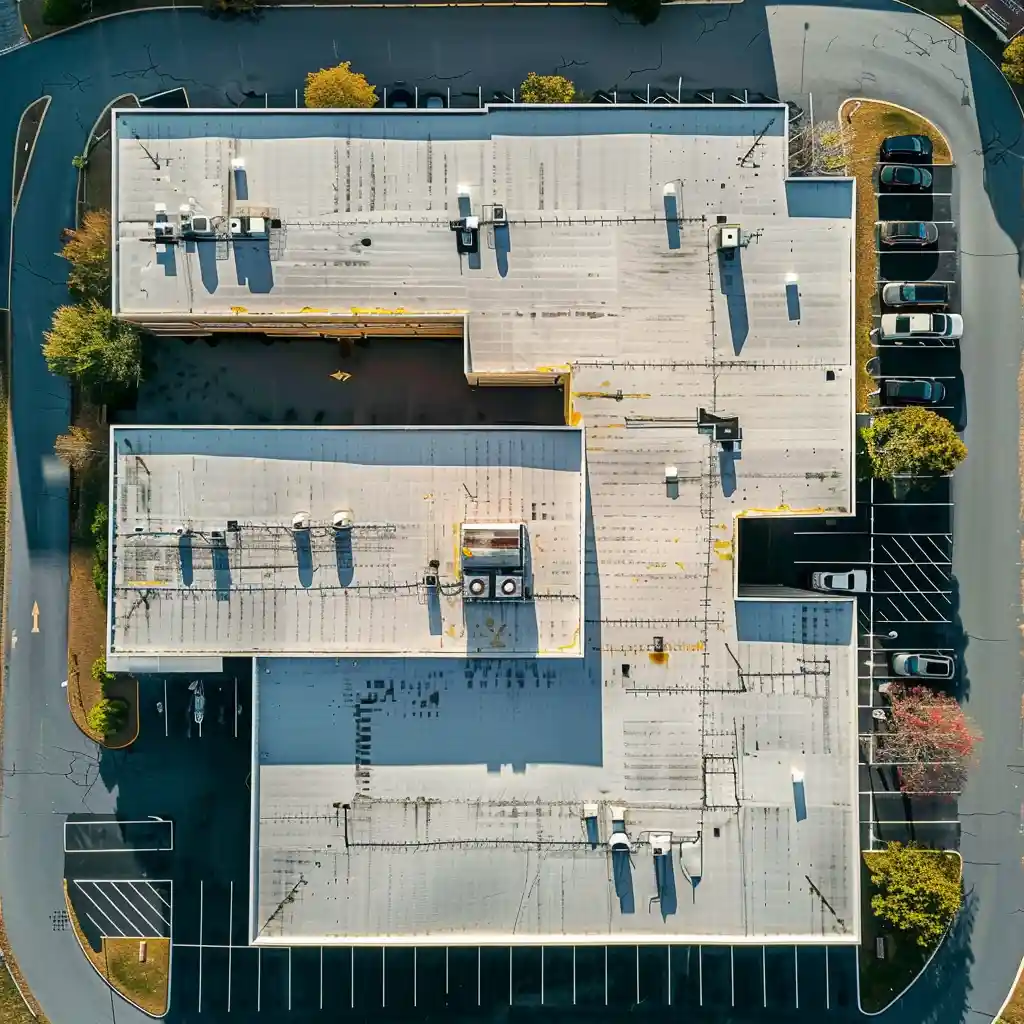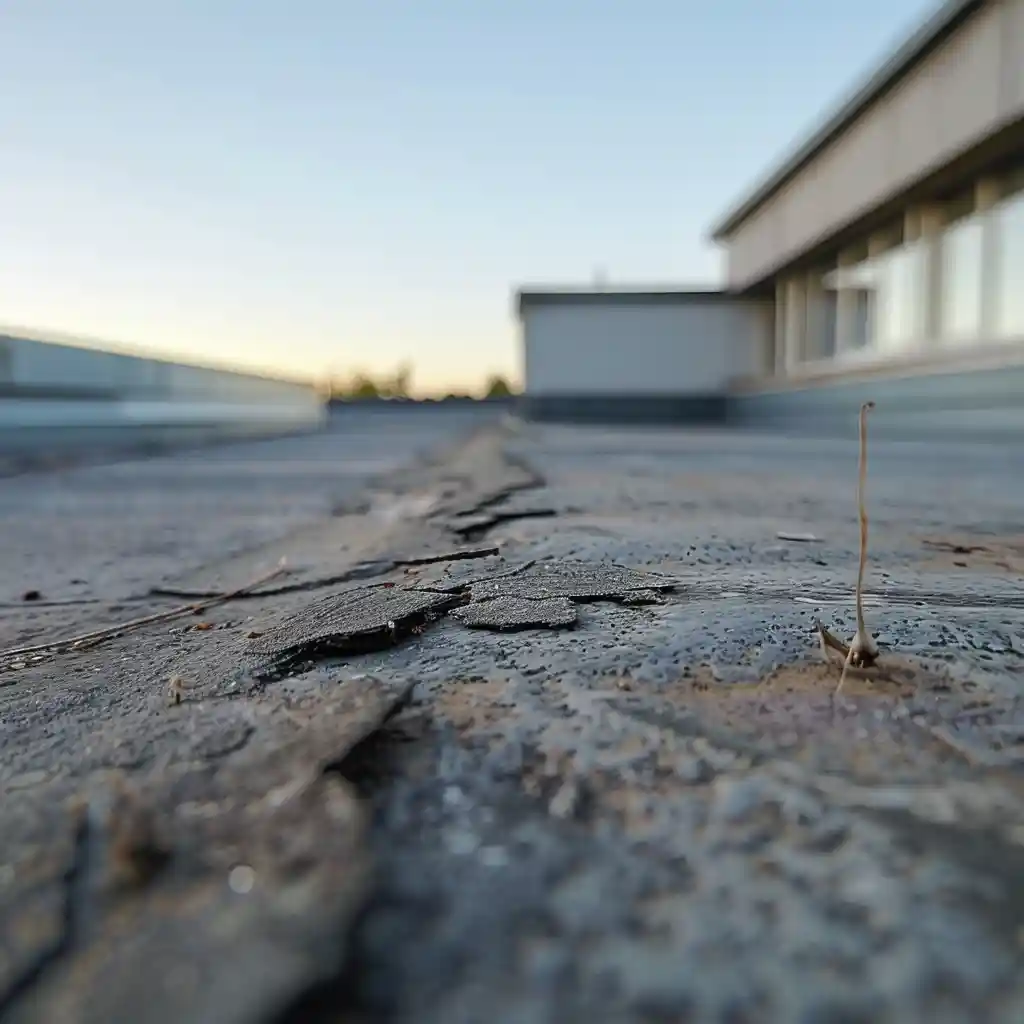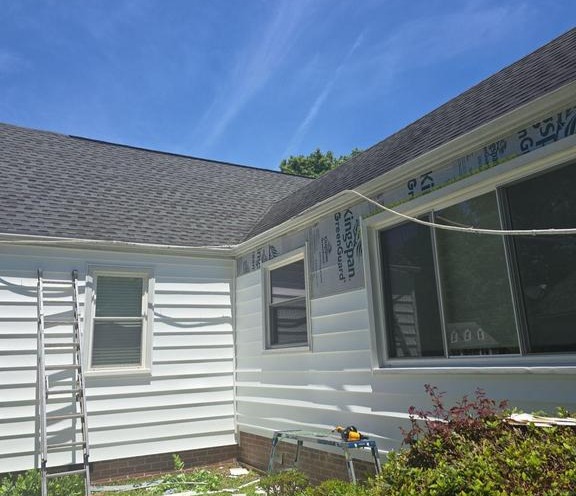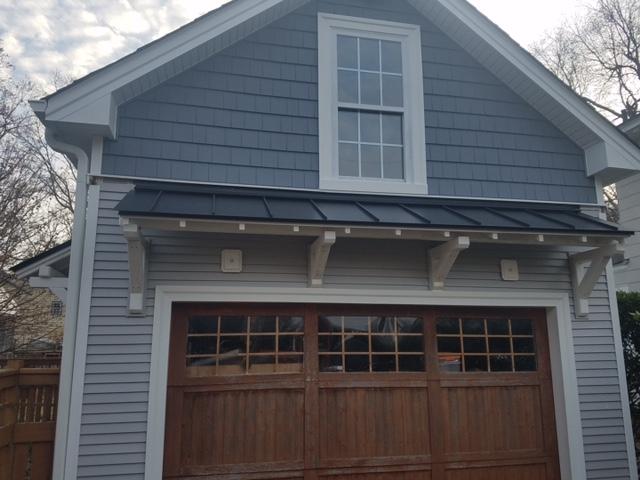How often should a commercial roof be replaced?
Use our quick contact form to get in touch with our team. We will respond shortly.

As a business owner or property manager, your commercial roof is more than just a cover over your head – it's a critical asset protecting your investments, operations, and occupants. Here at WT Anderson Roofing & Siding, we understand that maintaining this vital component is paramount to your building's longevity and efficiency, especially in the unique climate conditions of Virginia Beach. A common question we receive is: "How often should a commercial roof be replaced?" While there's no single answer, understanding the factors that influence a roof's lifespan and recognizing the signs of wear are crucial.
In this comprehensive guide, we'll go deep into the typical lifespans of various commercial roofing systems, explore the key factors that dictate their longevity, and most importantly, help you identify the undeniable signs that it’s time to consider a full roof replacement rather than just repairs. Our goal is to provide you with the knowledge to make an informed decision, ensuring your commercial property remains safe, secure, and energy-efficient for years to come.
The Typical Lifespan of Commercial Roofing Systems
The lifespan of a commercial roof can vary significantly, typically ranging from 15 to 40 years, though some high-quality systems under ideal conditions can even last up to 70 years. This broad range depends heavily on several critical factors, including the type of materials used, the quality of the initial installation, ongoing maintenance, and the local climate conditions.
Here's a general overview of how long different roofing materials typically last:
It's important to remember that these are averages. The actual performance of your roofing system can be extended or shortened by the factors we'll discuss next.
Factors Influencing Your Commercial Roof's Longevity
While the type of materials used is a major determinant, several other elements play a crucial role in how long your commercial roof will effectively protect your building. Understanding these can help you maximize your roof's lifespan and anticipate when a replacement might be necessary.
Material Type and Quality
As seen in our table, different roofing materials inherently have different expected lifespans. However, it’s not just the material type, but also its quality. Premium-grade EPDM, PVC, or metal roofing systems from reputable manufacturers will naturally outperform cheaper, lower-grade alternatives. The thickness, composition, and manufacturing process all contribute to the material's durability and resistance to wear and tear.
Installation Expertise
This is perhaps one of the most critical, yet often overlooked, factors. A roofing system, no matter how high-quality its materials, will fail prematurely if not installed correctly. Proper installation by certified and experienced experts ensures that seams are sealed correctly, flashing is installed precisely, and the entire system adheres to manufacturer specifications and local building codes. Poor installation can lead to immediate leaks, compromised structural integrity, and a significantly shortened lifespan. At WT Anderson Roofing & Siding, our meticulous installation process is designed to prevent these issues, ensuring your investment is well-protected from day one.
Climate and Environmental Conditions
The local climate conditions in Virginia Beach can have a profound impact on your commercial roof. We experience hot, humid summers, occasional severe storms, and the constant exposure to saltwater air.
- UV Radiation: Prolonged exposure to the sun's ultraviolet (UV) rays can degrade roofing materials over time, causing them to become brittle, crack, or lose their elasticity.
- Temperature Fluctuations: Extreme shifts between hot and cold can cause materials to expand and contract, leading to stress on seams and fasteners.
- Precipitation: Heavy rain, snow, and ice can put a significant strain on the roof, especially if drainage is poor. Standing water is a common culprit for premature roof failure.
- Wind: High winds, common during coastal storms, can lift and tear roofing systems, particularly if they are not securely fastened or are already aged.
Regular Maintenance and Inspections
Just like any other major asset, a commercial roof requires regular care. A proactive maintenance plan can significantly extend your roof's lifespan. This includes routine inspections (at least twice a year and after major storms), cleaning debris, clearing drains, and addressing minor repairs promptly. Neglecting maintenance allows small issues to escalate into major, costly problems that necessitate earlier roof replacement.
Building Use and Foot Traffic
The way your commercial building is used can also affect its roof. If the roof serves as a utility area for HVAC units, skylights, or even a rooftop deck, increased foot traffic and equipment installations can lead to wear and tear. Proper protection for walk areas and careful planning for new installations are essential.
Original Construction and Design
The underlying construction of your building and the original design of the roofing system play a foundational role. Factors like roof slope, drainage design, and structural support directly impact how well the roof can shed water and withstand loads. A well-designed roofing system that accounts for its environment and intended use will naturally last longer.

How Do I Know It’s Time to Replace My Commercial Roof? Seven Undeniable Signs
Beyond the average lifespan and influencing factors, there are clear, tangible signs that your commercial roof is nearing the end of its functional life and needs a replacement. Recognizing these indicators early can prevent catastrophic failures, extensive interior damage, and costly business interruptions.
Here at WT Anderson Roofing & Siding, we encourage property managers in Virginia Beach to be vigilant for these critical signs:
Sign #1: Frequent Leaks and Water Penetration
This is often the most obvious and alarming sign. If you're experiencing persistent leaks, even after repairs, it indicates that the roofing system's integrity is compromised in multiple areas. Small leaks can quickly escalate, leading to interior water damage, mold growth, and structural issues. If water is finding its way into your building regularly, it's a strong indicator that the roof's waterproofing capabilities are failing across a wide area, making a roof replacement the most cost-effective and permanent solution.
Sign #2: Widespread Cracks, Blisters, or Punctures
Visually inspect your roof surface. For membrane roofs like EPDM, TPO, or PVC, look for widespread cracking, blistering (bubbles under the surface), or punctures. These are signs of material degradation due to UV exposure, age, or mechanical damage. For modified bitumen or asphalt roofs, look for alligatoring (a pattern of interconnected cracks) or significant areas where the protective surfacing has worn away. These issues compromise the roof's ability to shed water and protect the underlying structure.
Sign #3: Visible Sagging or Ponding Water
A healthy commercial roof should have proper drainage, ensuring water flows off efficiently. If you notice areas of your roof that are visibly sagging or consistently accumulating standing water (known as ponding), it’s a serious concern. Ponding water adds significant weight to the structure, accelerates material degradation, and can lead to leaks. This often indicates structural issues with the roof deck or improper construction and drainage design that can only be rectified with a full replacement.
Sign #4: Deteriorating Flashing and Seams
The flashing (material used to seal roof penetrations like vents, skylights, and parapet walls) and seams (where sections of roofing materials are joined) are particularly vulnerable points. If you observe cracked, lifted, or separated flashing, or if seams are pulling apart, these are direct pathways for water intrusion. While minor seam issues can sometimes be repaired, widespread deterioration suggests the entire roofing system is aging and losing its adhesion or flexibility.
Sign #5: Granule Loss (for Modified Bitumen/Asphalt)
For modified bitumen or asphalt roofs, the top layer of granules provides UV protection and adds to the roof's durability. If you see significant granule loss, either in gutters or as bare spots on the roof surface, it means the underlying asphalt is exposed to the elements, accelerating its degradation. This is a clear sign that the roof's protective capabilities are diminishing.
Sign #6: Increased Energy Bills
An aging or failing commercial roof can compromise your building's insulation and energy efficiency. If your energy bills have inexplicably risen, it could be a sign that your roof is no longer providing adequate thermal protection. Cracks, gaps, and deteriorated materials allow conditioned air to escape and outside temperatures to infiltrate, forcing your HVAC system to work harder. A new, well-insulated roofing system can significantly improve energy performance and lead to long-term savings.
Sign #7: Your Roof is Beyond Its Expected Lifespan
Even if you don't see overt signs of damage, if your commercial roof is approaching or has exceeded its average lifespan (e.g., a 25-year-old EPDM roof), it's prudent to start planning for a replacement. Materials degrade over time, and proactive replacement can prevent emergency situations, protecting your business from unexpected downtime and costly interior damage. An expert inspection can confirm its remaining viability.
Repair vs. Replace: Making the Right Decision
When your commercial roof shows signs of distress, the question often arises: "Should I repair or replace my commercial roof?" This decision hinges on several factors, including the extent of the damage, the roof's age, and your long-term plans for the property.
When Repair is Sufficient:
- Minor, Isolated Damage: If the damage is limited to a small, specific area (e.g., a single puncture, a small section of lifted flashing) and the rest of the roof is in good condition and within its expected lifespan.
- Proactive Maintenance: Addressing small issues during routine inspections before they escalate.
- Budget Constraints: When a full replacement isn't immediately feasible, temporary repairs can buy you time, but should not be seen as a long-term solution for an aging roof.
When Replacement is Necessary:
- Widespread Damage: When multiple areas of the roof are compromised, indicating systemic failure.
- Beyond Economical Repair: If the cost of repeated repairs approaches or exceeds the cost of a new roof. This is often the case with older roofs.
- Age: When the roof has reached or exceeded its average lifespan, even if visible damage isn't yet catastrophic.
- Energy Efficiency Goals: If you're looking to significantly improve your building's energy performance, a new, modern roofing system offers superior insulation and reflectivity.
- Code Compliance: Older roofs may not meet current building codes, especially if you're undertaking major renovations.
At WT Anderson Roofing & Siding, we provide honest, expert assessments to help you determine the most cost-effective and beneficial solution for your Virginia Beach property.
The Benefits of a New Commercial Roof
Investing in a commercial roof replacement is a significant decision, but it offers numerous advantages that far outweigh the initial cost:
- Superior Protection: A new roofing system provides robust, comprehensive protection against leaks, water damage, and severe weather, safeguarding your building's structure and contents.
- Enhanced Energy Efficiency: Modern roofing materials and advanced insulation techniques can drastically improve your building's thermal performance, leading to lower heating and cooling costs. Many reflective or "cool roof" options are available.
- Increased Property Value: A new roof is a major asset that enhances your property's curb appeal and market value, signaling to potential buyers or tenants that the building is well-maintained.
- Reduced Maintenance Costs: A new roof comes with a fresh warranty and requires minimal repairs for years, significantly reducing your ongoing maintenance expenses.
- Improved Business Continuity: Eliminating the threat of leaks and roof failures means fewer disruptions to your operations, protecting your inventory, equipment, and employee productivity.
- Peace of Mind: Knowing your business is protected by a reliable, high-quality roof allows you to focus on your core operations without constant worry.
Frequently Asked Questions About Commercial Roof Replacement
How long do commercial roofs typically last?
The lifespan of commercial roofs can range widely, from 15 to 40 years on average, with some high-end metal roofing systems potentially lasting 50 years or even more under optimal conditions. Factors like the type of materials used (EPDM, PVC, TPO, metal, modified bitumen), the quality of installation, and local climate conditions (like those in Virginia Beach) all play a crucial role in determining the actual longevity of your specific roofing system.
Should I repair or replace my commercial roof?
The decision to repair or replace depends on the extent of the damage, the roof's age, and your budget. Minor, isolated issues on a relatively young roof can often be repaired. However, if your roof is experiencing widespread issues, frequent leaks, is nearing or has exceeded its expected lifespan, or if the cost of repairs is becoming excessive, a full roof replacement is typically the more cost-effective and beneficial long-term solution. Our experts at WT Anderson Roofing & Siding can provide a thorough assessment to help you make this decision.
What is the cost of a commercial roof replacement?
The cost of a commercial roof replacement varies significantly depending on several factors: the type of materials used (e.g., EPDM, TPO, metal roofing), the size and complexity of the roof, the amount of existing material that needs to be removed, and the specifics of the installation. While it's a significant investment, a new roof can offer substantial long-term savings through improved energy efficiency and reduced repair needs. We provide detailed, transparent quotes after a comprehensive inspection of your property.
What are the benefits of replacing my commercial roof?
Replacing your commercial roof offers numerous benefits, including superior protection against water damage, enhanced energy efficiency leading to lower utility bills, increased property value, reduced ongoing maintenance costs, and improved business continuity by preventing unexpected leaks and operational disruptions. It also provides peace of mind, knowing your valuable assets and operations are secured under a reliable, high-quality roofing system.
Partner with WT Anderson Roofing & Siding in Virginia Beach
Understanding how often a commercial roof should be replaced involves more than just looking at its age. It requires a keen eye for subtle signs of wear, an understanding of how materials and installation quality impact longevity, and a consideration of your property's unique environmental challenges.
At WT Anderson Roofing & Siding, we are your trusted experts in commercial roofing in Virginia Beach. We pride ourselves on our meticulous installation practices, use of high-quality materials, and honest assessments. Whether you're noticing early signs of deterioration or simply want to understand the remaining lifespan of your commercial roof, we are here to help. Our team is ready to conduct a thorough inspection, provide a detailed report, and offer tailored solutions that meet your business's needs and budget.
Don't wait for a roof emergency to strike. Contact WT Anderson Roofing & Siding today for a professional consultation and ensure your commercial property remains protected for years to come.





